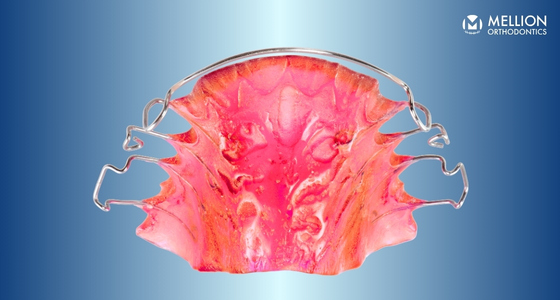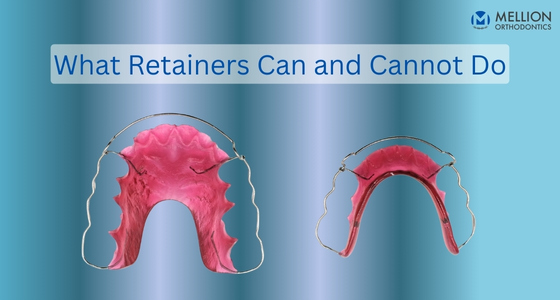Retainers play a pivotal role in orthodontic treatment, preserving the results achieved through braces or Invisalign clear aligners. But can retainers fix a slight shift or correct minor dental changes? In this post we will delve into the world of retainers, exploring their functions, capabilities, and the extent to which they can address minor tooth crowding relapse.

Before we tackle the question of whether retainers can fix minor crowding, it’s important to understand what retainers are designed to do in orthodontics.
Retainers are orthodontic appliances that are custom-made to fit your teeth. They are typically used after the completion of orthodontic treatment with braces or Invisalign clear aligners. The primary function of retainers is to maintain the corrected alignment achieved during the active phase of treatment. They work by holding the teeth in their new positions, preventing them from shifting back towards their original, crowded arrangement.
What Retainers Can and Cannot Do

While orthodontic retainers are valuable tools for maintaining alignment, it’s crucial to manage expectations regarding their corrective abilities.
Retainers for Minor Corrections: In some cases, retainers can address minor tooth crowding–often called orthodontic relapse. If you’ve experienced a slight shift after completing your primary orthodontic treatment, your orthodontist may recommend a new retainer. Normally this retainer will serve as protection against further tooth movement, and in some instances offer the ability to realign the teeth back into their desired position.
Limitations of Retainers: Retainers are not designed for significant teeth movement or complex orthodontic adjustments. Retainers can move teeth in one direction–often forwards or backwards. They are not good for moving shifted teeth that have rotated. Retainers lack the active force and versatility of braces or aligners, making them unsuitable for extensive corrections. If you’re dealing with more substantial shifts, your orthodontist might recommend a different approach to achieve the desired results.
Collaborating with Your Orthodontist
Orthodontic Evaluation If you suspect a minor shift or have noticed changes in your dental alignment, schedule a consultation with your orthodontist. They will evaluate your specific circumstances, determine the extent of the shift, and recommend the most appropriate course of action.
Retainer Adjustment: In cases of minor shifts, your orthodontist might suggest adjusting your existing retainer or creating a new one. This retainer may be designed to apply gentle pressure to guide the teeth back towards their optimal positions. In some instances teeth will only be able to return close to their ideal alignment.
Maintaining Long-Term Results
To ensure the effectiveness of your retainers and prevent future shifts, adhere to these best practices.
Consistent Wear: Follow your orthodontist’s recommendations regarding retainer wear. Consistency is key to maintaining your corrected alignment. At Mellion Orthodontics we recommend night time wear of retainers as a lifelong habit.
Proper Care: Keep your retainer clean by brushing it regularly and soaking it in a retainer solution as advised. A clean retainer contributes to optimal oral health.
Regular Check-ups: Attend regular follow-up appointments with your orthodontist to monitor the progress of any corrections and make necessary adjustments.

